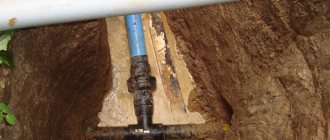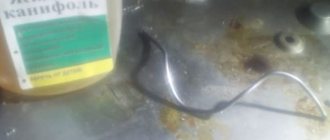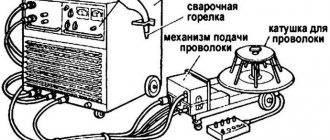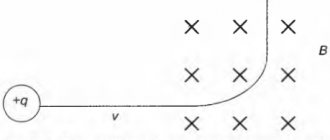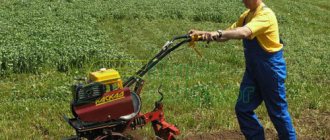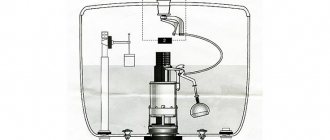Why do cutters burrow into the ground?
Motor cultivators are universal equipment for solving various agricultural problems. But you need to know how to properly operate the unit.
Often the cultivator gets buried when plowing. This problem is caused by the following reasons:
- Specifics of the configuration . Most models have four cutters. If high-quality material is used in their manufacture, they are quite heavy. Therefore, the cultivator literally sinks into the ground;
- Changing speed when not necessary. For example, when plowing soft, loose soil;
- The cutters are installed incorrectly. If they are attached to the hitch at too great an angle, the cultivator will sink;
- Soil that is too wet will clog the knives;
- The coulter is too deep into the ground and needs to be adjusted;
- RPM too low;
- The soil density is high , so the area needs to be cultivated twice.
There are ways to solve the problem of burying a cultivator.
How to properly set up a cultivator?
In order to prevent the cultivator from getting buried and a number of other common problems, the owner of the equipment needs to perform a number of steps to prepare and configure it.
These include:
- First, the cultivator must be installed on a thick board and the factory wheels removed from it. Instead, you need to attach one set of cutters on the left and right sides. One set of cutters includes 8 cutting knives - this number of elements gives the best result when processing soil;
- When installing cutters, you need to pay attention to the position of the knives. They should only point forward. The working part of each knife should not be sharp. Otherwise, the cultivator will not move forward, but will begin to bury itself in the ground. In addition, sharp cutters will cut weed stems rather than winding and pulling them along with the roots;
- Next, you will need to install an earring on the equipment, which is necessary for mounting the opener;
- The opener is a bar with holes made in it. It is necessary for precise adjustment of the position of the cutters when cultivating an area;
- To fix the opener, it must be installed in the shackle and secured with cotter pins and a bushing. To do this, select a second hole. The count is taken from the bottom of the opener. Thus, the cultivation depth will be 20 cm. This is quite enough for high-quality soil cultivation and the elimination of large weeds;
- To increase the depth of cultivation, the coulter must be lowered down and attached to the shackle through the upper hole of the element;
- To reduce the plowing depth, the coulter should be raised up and fixed to the shackle through its lower hole.
Having installed and configured the working equipment, you can begin operating the cultivator. To accurately determine the plowing depth, you should make a control run of the equipment across the site. At this time, you need to pay attention to the operation of the cultivator. If its engine vibrates strongly and smokes, it means that the equipment is subject to excessive loads. In this case, you will need to set the coulter to a shallower depth and check the operation of the cultivator again.
After the first tillage has been completed, the opener should be switched to deeper plowing mode. This arrangement will allow you to properly process the area without harming the working mechanisms of the cultivator.
What to do if the cultivator gets buried?
If the motor cultivator is buried in the ground, you need to perform the following steps:
- The outer knives are removed from the cutters. In this way, the weight of the unit can be reduced. To achieve maximum effect, a weight should be installed at the rear of the unit to balance the weight of the cultivator. The load must be securely secured;
- The motor cultivator can be pulled out of the ground by using the reverse gear. If it is not there, you will have to make an effort;
- Before each use of the equipment, check the position of the cutters. Knives should be pointing forward;
- It is necessary to adjust the position of the wheels;
- Inspect the transmission. Speeds should not be switched arbitrarily. Often the distance between gears and transmission channels needs to be adjusted.
Causes and solutions to problems with equipment being buried in the ground
There are several reasons why a motor cultivator buries itself in the ground. Let's list the main ones:
- Often the immersion of equipment is associated with its configuration. Most mini cultivators are equipped with four cutters. They, provided the manufacturer uses high-quality material, are heavy. So they literally pull the cultivator into the soil;
- Another common reason is switching the unit to second speed where it is inappropriate. For example, when cultivating soft, loose soil;
- Equipment often gets buried in the ground due to improperly installed cutters. If they are attached to the hitch at an angle greater than indicated in the instructions, this will also cause the cultivator to sink.
Having figured out why the cultivator buries itself in the ground, you should list options for solving this problem.
The owner should immediately do the following:
- Remove the outer knives from the cutters. This will reduce the weight of the equipment. To more effectively get rid of immersion, you need to install any weight somewhere in the rear of the cultivator - this will balance the weight of the working unit. It is important to securely secure the load so that it does not fall due to motor vibration;
- To pull the cultivator out of the ground, use reverse gear. If it is not there, then the unit will have to be pulled out of the ground manually.
- Always be careful when adjusting the position of the cutters. Make sure the blades are facing forward each time.
If the cultivator buries itself in the ground, inspecting the transmission will help you determine what to do in such a situation.
She should not change gears on her own. If this happens, then it is likely that the node's channels are interfering with the gears of other nodes. In this case, you will have to adjust the distance between nearby gears and transmission channels.
How to avoid burying: current tips
It is worth considering other options for solving the problem of burying a motor cultivator.
What nuances should you pay attention to?
- The soil should not be processed immediately after heavy rain. If the soil is too soft, the unit will sink due to its rather large weight. The knives will also become clogged. You need to wait until the soil dries a little;
- Correctly adjust the coulter. It is important to adjust the element for optimal immersion in the soil;
- Set the gas regulator to maximum and check the proper operation of the gearbox;
- Too hard soil needs to be tilled twice. First you need to set the minimum depth level, then set the coulter to the depth required for processing.
Thanks to simple tips, you can not only protect your motor cultivator from getting buried, but also prevent various problems:
- It is worth purchasing a device with reverse gear. This way you can not only solve the problem (no need to pull the cultivator out of the ground manually), but also protect spare parts from wear;
- It is better to cultivate soil with moderate moisture to prevent the blades from being forgotten when the soil is too wet and the need to till the soil twice in hard soil;
- The most thorough machining is performed at low speed with high rpm of the cutters.
If you carefully check the cultivator and attachments before starting work, you can prevent it from getting buried and save your time. It is important to timely maintenance and adherence to safety regulations so that there are no injuries or breakdowns of the device during operation of the unit.
What needs to be done to prevent the cultivator from digging into the soil?
To eliminate the risk of the cultivator burying itself in the ground, the farmer must adhere to a list of certain rules.
These include:
- do not rush to cultivate the soil immediately after precipitation. The equipment will quickly sink into too soft, wet soil. In addition, high soil moisture will lead to the formation of rust on cutters and other metal elements of the cultivator;
- adjust the coulter correctly before each use of the cultivator;
- set the equipment gas regulator to the maximum permissible value and always check the gear shift mechanism;
- Cultivate the soil at least twice. When first processing, the opener should be set to the minimum depth position. The second treatment should be done with the opener set to the farmer's desired depth.
When using a cultivator, you must remember that careful checking and adjustment of the equipment are the main ways to help prevent the equipment from being buried.
How to prevent the cultivator from getting buried - expert advice
There are a number of measures that will help prevent the unit from sinking into the soil. Experts advise:
- Do not treat the soil immediately after rainfall. The soil will be too soft, causing the equipment to sink into it;
- Correctly adjust the coulter;
- Set the cultivator gas regulator to the maximum possible value and check the gear shift;
- Cultivate the soil at least 2 times. The first time the coulter is set to the minimum depth level, and the second time – to the depth required for processing.
A thorough inspection of the unit and equipment will prevent it from digging into the ground and save you time.
Almost every farmer knows why a manual cultivator is needed today. To facilitate the cultivation of a plot of land, summer residents purchase various agricultural equipment - irrigation, sowing, harvesting, and soil care. The latter is the most labor-intensive and quite complex process, because it is necessary to harrow, loosen and dig up the soil. Today, a hand cultivator for your garden can help you with this.
Effective, convenient and sooooo fast. When you need to lose 3-4 kilograms in a week.
It will be useful in cultivating land on a small plot; it will help cultivate the land faster, more efficiently and with better quality.
There is a wide variety of cultivators available on agricultural machinery markets. Experienced gardeners and gardeners carefully select and purchase the much-needed tool.
Thinner Stepanenko: I weighed 108, and now 65. At night I drank warm...
To choose the right cultivator, you need to determine how often the equipment will be used and for what purposes. Let's compare the types of hand cultivators available on the market, their advantages and disadvantages.
Reasons for burying a cultivator in the soil
The most common reasons for the frequent burying of agricultural implements in the ground include:
- A feature of the factory configuration of a motor cultivator is that most often the standard equipment of cultivators includes 2 pairs of cutters. For their production, durable materials are often used, which are relatively heavy. This unbalances the structure and causes the front of the cultivator to regularly sink into the ground, especially if it is used in an area with loose soil;
- Incorrectly installed cutters - the angle of inclination of the working parts plays an important role for the normal operation of the equipment. If the cutters are installed at a slope greater than required by operating conditions, this leads to frequent burying of the cultivator into the ground;
- the speed of the agricultural implement is too high - often the motor cultivator buries itself in the ground due to the operator turning on the second speed in areas with loose soft soil. In areas with this type of soil, it is best to use the equipment at first speed.
Often the reason for the cultivator to bury itself is wet soil accumulated on the surface of the cutters. The already massive working parts of the agricultural unit become even heavier, which is why the equipment constantly tilts forward.
